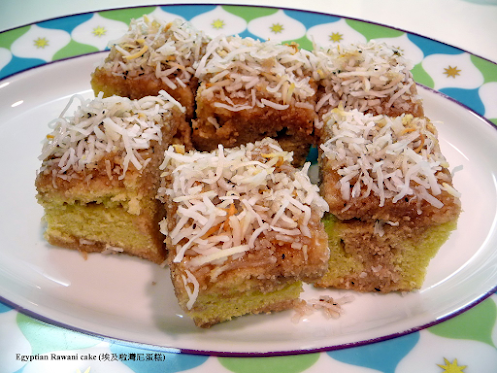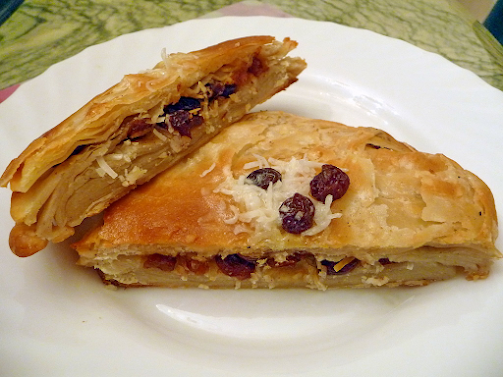Egyptian Delights Episode 3 of 3
Egyptian Delights 2016-2017
Egyptian Delights 11:
Egyptian Rawani cake
Rawani cake is very popular in Egypt such that nearly every cake shop sells it. This cake uses semolina, eggs, vanilla and sugar to bake. It is sprinkled on the top with rose and lemon syrup, and shredded coconut. It is tasty, fragrant and colourful.
This cake is also popular in Greece, and is called Ravani cake. Butter and shredded coconut are added. However, Egyptian Rawani does not contain butter and shredded coconut.
Egyptian Delights 12:
Zabadee el Mishmish
Apricot Mousse
Zabadee el Mishmish is whisking apricot pulp, cottage cheese, yogurt and honey. Very yummy.
Egyptian Delights 13:
Kahk
In Arabian language, 'Kahk" means cookies or biscuits. Kahk will be prepared in Eid al-Fitr, Christmas or marry off a daughter. Inside the cookie is Agameya (honey),walnuts, pistachio, lokoumi or empty. Icing sugar is sprinkled on top.
Eid al-Fitr is an Islamic festival. It starts when Ramadan is finished. It is also New Year for Muslim countries.
Egyptian Delights 14:
Bassima
When you see Bassima, you will think that it is Egyptian Delight 7 Basbousa. Although they both originated from Egypt, the soul of Basbousa is semolina while that of Bassima is coconut. Bassima merely uses all purpose flour; much coconut; soaked in syrup and decorated with nuts.
Egyptian Delights 15:
Egyptian Goulash
Egyptian Filo Meat Pie
Goulash is a traditional dish of Egypt. It is fragrant and crispy. It was originated in Egypt and spread to Mediterranean district. The outer layer is filo dough. The filling usually is minced beef, sometimes, it can be white cheese either Gebna bēḍa or Domyaṭi , mint, spinach, or mix of spinach and minced beef. It is the predecessor of beef pie. Very delicious and one cannot stop eating!
Egyptian Delights 16::
Egyptian Torte
Torte means cake. Egyptian Torte has 3 layers, each layer is biscuit, custard, fresh cream, caramel and hazelnuts. Filling is crispy. It is fragrant and delicious.
Next, Year of the Dragon Delights 2024
Publisher: Chef Kar Delight
























































